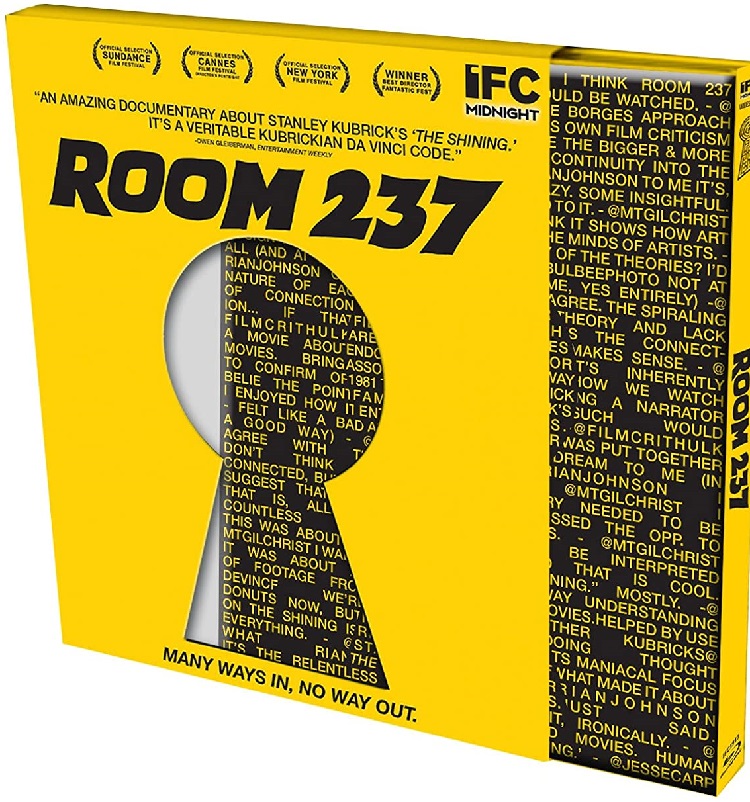
Based on Stephen King’s novel, Stanley Kubrick’s The Shining tells the story of the Torrance family during their time alone at the Overlook Hotel during its winter off-season. For those that don’t know it, The Shining is a family drama about a father, Jack (Jack Nicholson), driven to kill his wife, Wendy (Shelley Duvall), and son, Danny (Danny Lloyd), as a result of losing his mind or becoming possessed.
But what if I also told you The Shining was also about the genocide of Native Americans, or that it was about the Holocaust, or that it was Kubrick’s confession about his involvement in the “faked” moon landing? For some of the interview subjects in Rodney Ascher’s Room 237, that is the subtext of The Shining, revealed through visual clues, including ones Kubrick hid in plain sight, like a can of Calumet baking powder or the name of a typewriter or an image on a sweater. Either the subjects have never been involved in the making of a film or they took Kubrick’s documented perfectionism to absolute values, because at no time do they allow for the possibility Kubrick and the crew ever made a mistake or had to make compromises to continuity in order to get a shot in the can.
The interviewees are award-winning journalist Bill Blakemore, history professor Geoffrey Cocks, author and playwright Juli Kearns, musician John Fell Ryan, and author and filmmaker Jay Weidner. All five have an intense, enduring relationship with The Shining, each having watched it numerous times from front to back, and back to front, especially in Ryan’s case as he holds staged screenings of the film as it runs superimposed on itself, simultaneously forwards and backwards. We never see them speak, which keeps viewers from making snap judgments about them in response to their appearance. Instead, the viewer only has their voice and their statements to go on, matched by Ascher with visuals from The Shining and other Kubrick films.
As a Kubrick fan myself, Room 237 is an absolute delight and a film I will one day own and keep on my shelf right next to The Shining. Just to revel in the images he and his team created is wonderful. Watching it reminds me of sitting with friends, between the mid-’80s and mid-’90s, going through VHS tapes to show each other things we discovered as Ascher lets the film play, rewind, and pause to show the viewer what the interviewee discovered. The clues are things I never noticed; some are compelling while others are laugh-out-loud ridiculous, like one example of the film’s hidden sexuality being revealed when a binder on manager Stuart Ullman’s (Barry Nelson) desk gives him the appearance of an erection the moment he shakes hands with Jack.
In conjunction with the film’s release, The New York Times conducted an interview with Barry Lyndon actor and Kubrick personal assistant Leon Vitali, who dismisses all the theories presented, which completely misses the point of the film. Much as we are presented with a variety of interpretations regarding The Shining, Ascher’s film can be viewed multiple ways as well. Room 237 looks at obsession, it shows how the audience is just as important as the artist to a work of art, and it reveals how the human mind needs patterns in order to make sense of the world and will create them if they aren’t there. Or it doesn’t.